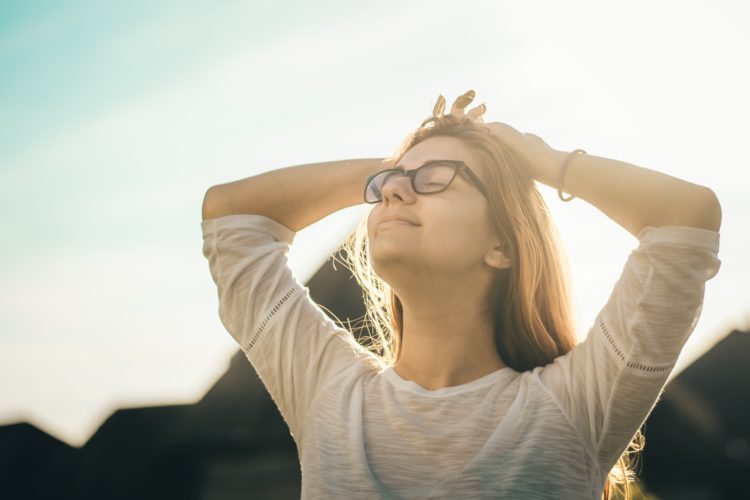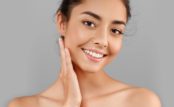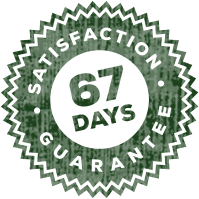If your skin is constantly flushed and has little red bumps that feel like acne, you might have rosacea. It is a chronic skin condition that causes redness and is very common in many adults. Rosacea can develop at any age, but it’s more prevalent in women between 30 and 50. That said, men who develop rosacea can find their symptoms more severe and get progressively worse when left untreated. Also read our post about, “8 Miracle Skin Lightening Ingredients in Nature” for more tips.
Symptoms of Rosacea
Rosacea usually first strikes as a persistent redness on the cheeks, nose, chin, and forehead that comes and goes. Many female celebrities like Cynthia Nixon and Cameron Diaz caught their symptoms early and can manage them by avoiding triggers and taking medication.
However, you often develop acne-like bumps and pimples that become more permanent when left untreated. You may also experience further inflammation and create a red, bumpy texture and even enlarged skin from excess tissue. Comedian W.C. Fields’ famous red, ruddy nose is an example of what rosacea looks like if you don’t manage your symptoms from the get go.
What Causes Rosacea?
Researchers haven’t been able to find out the exact cause of rosacea. However, people afflicted with this skin condition can often pinpoint specific triggers, like exercise, alcohol, and stress.
You might also develop rosacea if you move to a different climate that your skin doesn’t agree with. Some other possible contributors include genetics, immune function, skin mites, and issues with a protein on the skin called cathelicidin.
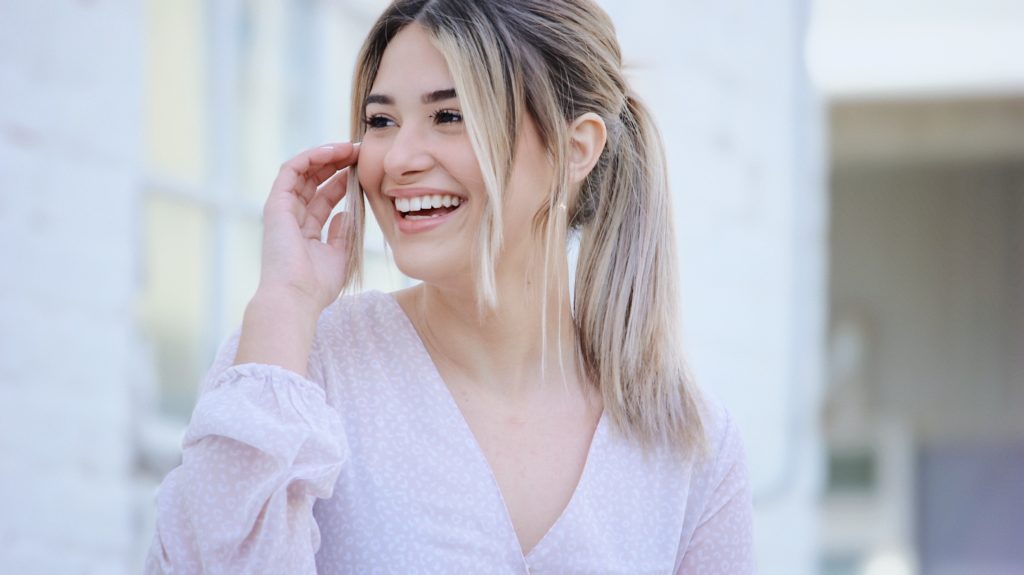
What Are The Four Types Of Rosacea?
Regardless of what causes rosacea, it can be pretty easy to identify, thanks to its trademarked persistent redness and bumpiness. You can also eliminate specific food triggers to see if your redness stays. Once you figure out what type of rosacea you have, you can easily manage your symptoms to improve your skin texture and feel.
- Erythematotelangiectatic Rosacea
Erythematotelangiectatic rosacea is often considered “entry-level rosacea” because it’s the mildest form. It’s characterized by persistent redness on your face caused by the enlargement of small blood vessels beneath your skin. If you’re lucky, you’ll get flare-ups every once in a while, but you don’t have to do anything to treat it. However, there’s always a risk of making it worse, affecting more of your skin, and even becoming more permanent without adequate treatment.
- Papulopustular Rosacea
Papulopustular rosacea is often misdiagnosed as acne since it presents as “whitehead” pustules. They’re the type of red, swollen bumps that occasionally contain some pus that everyone has been guilty of squeezing every once in a while. Severe papulopustular rosacea can take a very long time to go away and can cause multiple blemishes on your face, scalp, neck, and chest.
- Phymatous Rosacea
Phymatous rosacea is one of the more severe forms of rosacea as it causes your skin to thicken and scar, making it bumpy, swollen, and sometimes discolored. It usually affects your nose and results in a bulbous, thick texture. This type of rosacea appears more frequently in men than in women.
- Ocular Rosacea
In a few individuals, rosacea will affect their eyes, causing them to look watery or bloodshot. It can cause persistently dry, sensitive eyes, and cysts may form on your eyelids. Some might also complain that their eyes feel like they’re burning or irritated for no apparent reason. It’s rarely diagnosed as doctors overlook the connection between skin and eye symptoms.
What Foods To Avoid To Reduce Rosacea Flare-Ups?
If you have rosacea, chances are you’ve experienced flare-ups when you eat certain foods. Here are the six most common food triggers to help you determine what causes your rosacea.
Spicy Food
Hot peppers give your dish an extra kick, but it dilates the tiny blood vessels beneath your skin. In the case of rosacea, the blush that comes with spiciness stays on your face for longer and causes your skin texture to change. If you’re prone to bad cases of rosacea flare-ups, it might be wise to take red peppers, paprika, and other spicy ingredients out of your kitchen.

Alcohol
Red wine is named as the top rosacea trigger by the National Rosacea Society. However, alcohol, in general, is known to cause flushing and increase blood flow to your face, which is dangerous when your skin stays red after a night out.
Hot Beverages
You might want to rethink your morning routine if you’re one of those people who can’t start their day without a warm cup of coffee. Hot beverages like coffee and tea increase blood flow to your face and cause flushing that might become more permanent. However, you don’t have to give up your favorite caffeinated drink forever—just switch to iced versions or wait till it’s completely cooled before you take a sip.
High-Histamine Fruits And Vegetables
Fruits contain many nutrients and antioxidants, but that doesn’t mean they are all good for you. Some fruits are high in histamine, an organic compound that triggers an immune system response when consumed. It flushes your face, which essentially exacerbates rosacea flare-ups.
If you’re prone to redness, you might want to take pineapples, strawberries, and tomatoes out of your diet. Certain vegetables like eggplant, spinach, and legumes also contain high histamine levels.
Dairy
Dairy is a good source of vitamin D and calcium but can, unfortunately, cause rosacea flare-ups if you’re not careful. If you notice your skin becoming redder after consuming milk, certain cheeses, and yogurts, switching to dairy-free substitutes like rice milk or soy milk might be wiser.
Chocolate
Many people turn to chocolate when they need some edible happiness. However, chocolate contains cinnamaldehyde, a compound that naturally causes your blood vessels to dilate—the same reason it’s touted as one of the top erotic foods is now making your rosacea worse.
What Foods Are Good For Rosacea?
So, what can you eat? While there’s not a specific rosacea diet, you can eat certain foods to get the nutrients your body needs while reducing the risk of bad rosacea flare-ups.
Healthy fats
Research suggests that healthy fats like salmon (omega-3), herring (selenium), and sardines (vitamin D) can provide relief to a variety of dermatological conditions like rosacea. Flaxseed oil and olive oil are also dermatologist recommendations since they show when managing rosacea symptoms.
Probiotic and Prebiotic-rich Foods
Since rosacea is linked to inflammation, your gut may trigger nasty rosacea flare-ups when it’s not at its 100%. Some people experience rosacea alongside irritable bowel syndrome (IBS) and other gastrointestinal conditions. Because of this, you might be able to prevent flare-ups with probiotic and prebiotic-rich foods like sauerkraut, miso, kimchi, and kombucha.
If you’re not into fermented food, you can also experiment with vegetables and fruits that are high in gut-friendly vitamins, like whole grains, bananas, onions, and garlic. That said, rosacea is triggered by different things depending on how your body reacts to them. What might trigger someone else’s rosacea might not be the same as yours, so keep eliminating and adding food into your diet to determine what works for you.

How To Treat Rosacea At Home?
You can’t cure rosacea entirely, but you can manage your symptoms by learning and listening to your body. If your case of rosacea is more severe, your doctor can prescribe some gel, cream, or even laser treatment to alleviate your condition. But if you don’t want to be hundreds of dollars out of pocket, here are three at-home remedies that might help reduce rosacea.
Change Your Lifestyle
Your food isn’t the only thing that might be causing your skin to look like a tomato. Stress and anxiety are common rosacea triggers, so make sure to practice a few relaxation techniques and breathing exercises to keep your cortisol levels down. You can also wear sunscreen to prevent sun damage and avoid medication that causes your skin to flush.
Avoid Potential Irritants
Retinol, salicylic acid, and benzoyl peroxide are very popular nowadays for their skin renewal properties, but they’re not for you if you struggle with rosacea. Instead, opt for skincare products filled with soothing, anti-inflammatory ingredients like aloe vera, camomile, and green tea.
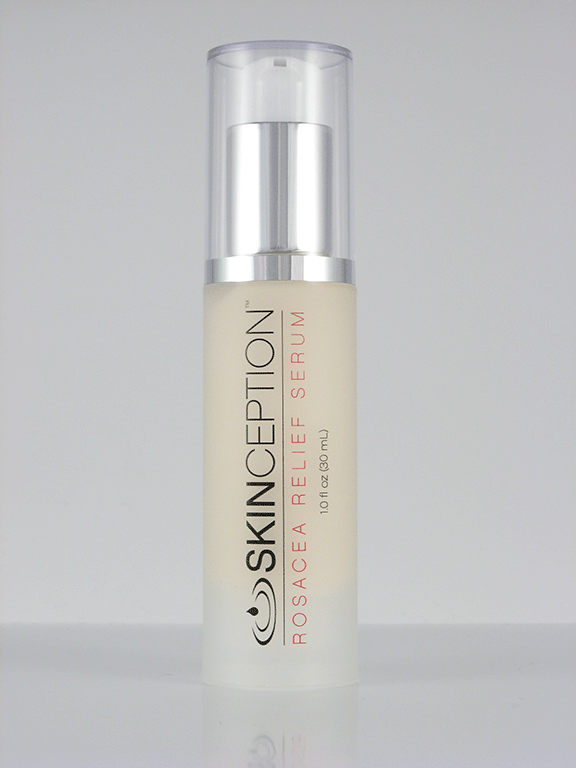
Skinception Rosacea Relief Serum
Thanks to Renovage, Skinceptions’ Rosacea Relief Serum is clinically proven to reduce redness by 90%. Filled with moisturizing and calming ingredients, it improves your skin’s texture and feel by decreasing inflammation, skin discoloration, and the appearance of spider veins on your face.
The best thing is Rosacea Relief Serum comes with a risk-free, money-back guarantee—if you’re not satisfied with the results within 67 days, you can return it to get a full refund. If you’re struggling with rosacea, the Rosacea Relief Serum might be your best shot at getting a flawless, red-free face again.
Looking for an anti-wrinkle cream that will make your skin youthful naturally? Find out more with our post, “4 Secrets to Boost Collagen in Your Skin Naturally.”

